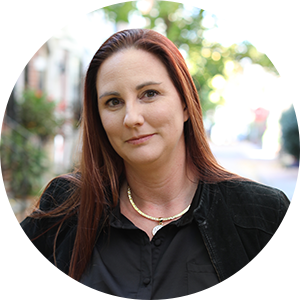1. AI is the cool kid, but what about mental health?
Artificial intelligence — as a potential blessing or an equally concerning curse — was on everyone’s mind. My favorite saying though was repeated no less than five times throughout the week: “AI is not going to take your job; someone who knows how to use AI will.” It did not matter whether I was in a conference room or the hotel lobby coffee shop, I overheard people wondering where to implement the new technology for efficiency without sacrificing ethics and academic integrity.
Unsurprisingly, the rooms were filled, and then some, for nearly every session devoted to artificial intelligence. Attendees who couldn’t find a chair either stood for the hour-long presentations or found a place to sit on the ground. AI has taken over higher education, and whether this is the result of fear or an overwhelming desire to learn is not yet clear. Regardless, it feels like everyone wants to “get up to speed” to make sure they aren’t left behind.
What was surprising is that there were nearly as many sessions devoted to student mental health, but these were not as well attended — with rooms half empty. Are we, as an industry, done tackling mental health issues? Because our students surely are not.
We have all read the studies that the pandemic’s impact on mental health may be even greater than the impact the crisis had on physical health. As professional-aged adults, the three-year(ish) blip of the pandemic is merely a drop in the bucket — something that we can put in context with the other 25-60 years of our lives. But for our college students, that blip was 15-17% of their current lifetimes.
According to a 2023 survey by TimelyMD, the numbers around student mental health continue to be troubling:
- Seven out of 10 (71%) students are experiencing mental health issues such as stress, anxiety and/or depression.
- More than three-quarters (78%) report the same or higher levels of severity as this time last year.
- Students’ top five stressors are their mental health (50%), followed by personal finances (39%), academics (37%), mass shootings (35%) and inflation/rising prices (35%).
Moreover, studies indicate that more than half of all college students meet the criteria for loneliness, which can contribute to more severe crises.
- 54% met the criteria for experiencing loneliness.
- 79% of surveyed students reported they had experienced moderate or high stress levels within the last 30 days.
- 29% met the criteria for suicidal ideation, while 3% reported attempting suicide in the past year.
- 12% had intentionally injured themselves within the year.
At AMA, the team at UC Davis presented the initiatives they implemented across their campus to counter this trend. By introducing a wide range of measures, from a website devoted to resources to stickers placed on the campus coffee cups, the UC Davis Aggie Mental Health program has begun to chip away at the stigma and the effects of mental health crises.
Although UC Davis acquired a grant for many of the team’s more ambitious endeavors, plenty of the ideas can be implemented on smaller campuses through peer-to-peer outreach and with minimal expense and extensive compassion. According to Jennifer Butler and Jennifer Vaughn, the initiatives would not have been as successful without the buy-in from numerous student affairs departments, faculty and students.
Two weeks after the AMA symposium, I — as the parent of a college student — am still concerned that more people did not attend the UC Davis workshop to spark ideas for use at their institutions. Are we so focused on the newest AI technology that we are going to move away from addressing mental health concerns before truly resolving them? Do we have the resources to embrace AI while alleviating stress and loneliness among students? Surely, this isn’t an either–or situation.




